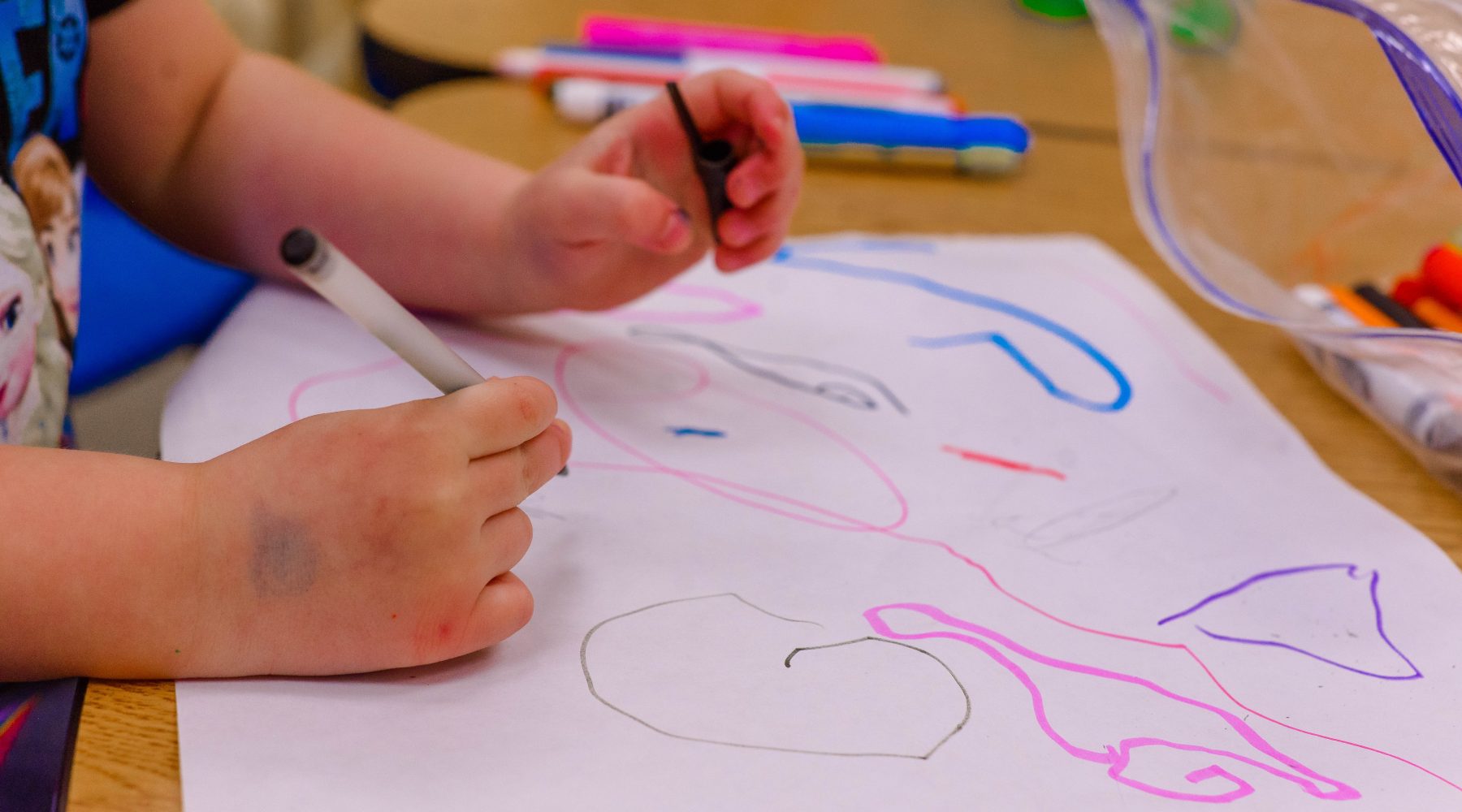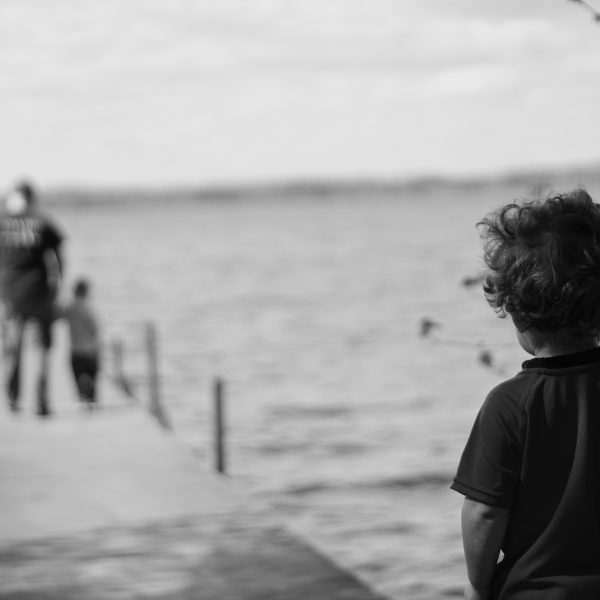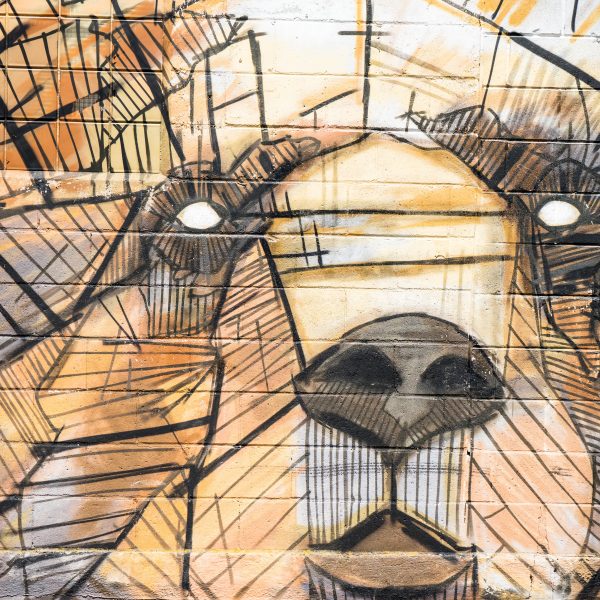‘I haven’t lectured before, my heart beated so fast’

Including the voices, perceptions, feelings and perspectives of children in the learning and teaching of those emerging professionals within the early childhood education and care (ECEC) sector may seem a logical premise – after all, who better than a child to explain the viewpoint of children as a collective?
How often, however, does this inclusion happen in an authentic way? The feelings of children are often guessed at by well meaning adults, who then translate their feelings, learning, play and ideas to educators gaining qualifications within the sector.
Australian Catholic University (ACU) Associate Lecturer Karen Hope embarked on ‘being the change’ in this space, bringing together her Bachelor of Education (Early Childhood and Primary) students with the children of East West Childcare. Here, Karen shares her findings from the experience.
Children are experts about children
At the beginning of 2019 I came up with an idea of seeing whether I could include children in one of the undergraduate units I was teaching at ACU in a sustained and authentic way.
It was not until the second semester that I found the right fit, in terms of the subject that I was able use as a vehicle to get the project started. Partnerships: Inclusive and Diverse Learning seemed like the perfect avenue to include children as a way of demonstrating to students that things for children and about children are only learned well from children.
Children are the experts on their own lives and if we want to know what children think about teachers and the types of things teachers need to know, we should ask them.
This article includes the voices of East West Child Care, a third year ACU student, and myself.
Karen Hope – Associate Lecturer – ACU
I have had a long professional association with East West Childcare and it was while bumping into them on their regular out and about sessions in Fitzroy, Melbourne, that I realised the potential opportunity that a partnership with this local early learning centre offered to both the children and the students at ACU.
It was an opportunity for me to demonstrate to the students that I teach what it really means to view the child as a citizen.
Including children in the lectures was not intended to be a tokenistic gesture or gimmick that provided some cute ‘sound bites’, but rather an authentic way to listen to the voice of the child over a sustained period of time.
I had been thinking for a while about how to evidence, in my own pedagogical approaches, the visibility and inclusion of children. While I had taken pre-service teachers out to early learning centres before, and had some children visit the spaces where I was teaching, I was becoming more interested in how to include the ‘voice’ of children within the lecture itself.
All of my teaching and ideas are inspired by the Reggio Emilia project. This educational project from the northern part of Italy recognises children as citizens – full of rights and potentials. The visibility of children is paramount to this approach to early learning. In Reggio Emilia, the view is held that children’s experiences should be coherent with the experiences of everyday life.
As such, while the University is a place of learning, teaching and research, so are early learning centres places of learning, teaching and research, and I wanted to make that visible to ACU students.
I ask my students constantly “What is your image of the child?” All teaching, related to young children, needs to start with this question.
Is it an image that sees children as co-constructors of knowledge – competent and capable – or is it an image that places children as the receivers of knowledge, or empty vessels to be filled?
The image of the child that you hold will say much about what you think children’s rights, competencies and potentials are.
The first lecture that the children attended was very organic in nature. The children had spent time in the lecture space prior to the first class and had also seen a lecture taking place the week before. A strategy that was used to include everyone in the space was for the children’s teacher to read two stories to the whole class.
To ease the children’s transition into the lecture space, a range of activities were placed to the side of the lectern so that the children had materials to engage with while their teachers, the University students and myself were talking.
The children played, interjected with ideas, whispered to their teachers, and showed images on the data projector of the early learning centre that they had come from.
A relaxed format for staff, students and children was a good strategy to use. There were no predetermined outcomes for this first lecture, other than to welcome the children and include them in a discussion about teaching and learning. We talked about what makes a ‘good’ teacher and the children were able to offer ideas or drawings that contributed to this.
I have been asked for my perspective on why this inclusion of children does not happen more often and I think there are three main reasons.
Firstly, there is a view that it is “too hard” and that there are too many rules and regulations around young children being out in the community. In my opinion, this is simply not true. Yes, it does require planning, and there have been many hours spent by both East West Childcare and myself in orienting these children in to this space, however there have been no obstacles in getting this project off the ground.
Secondly, it is easier not to do this. Delivering tertiary content in the way it has always been delivered is the path of least resistance. It does take time and commitment to get this idea off the ground. It would be easier to roll out pre-prepared material for students. I have also spent many hours in the children’s space at East West so that they could get to know me, and I have been sending ACU students into the service during tutorial sessions to further strengthen the connection.
Thirdly, I think the first thing that happens when we become adults is that we forget what it is like to be a child. As adults, far removed from the sense of connection in relation to being a child, we need to bring in the voices and authentically of children to deliver the best quality pre service education.
I have often said that there is little difference between teaching four year olds or 24 year olds. The curriculum might be different, but the pedagogical principles and practices are the same. Teaching is teaching.
Engaging with the children through the course of my lecturing, and, indeed, allowing the children to engage with the lecturing, has not only allowed me to show my students what is possible in the field of education, but also open them up to the awareness that being around children is good for you.
We are all a better version of ourselves when children are in the mix. I looked around the lecture room when the children were present and everyone was smiling, whether they knew it or not.
My plan for this project is that this service and the children who attend it will follow me through my teaching at ACU. The children are also very interested in other faculties and have visited the nursing faculty, the library, the roof garden, and art studio. They have also found a secret garden! There is so much scope for this project that I think the full extent of all the possibilities are not even evident to me yet.
East West Childcare – Director – Ruth Harper
Our kinder children go out and about every Wednesday, for the whole day. We explore our local environs – the streets, parks, creeks and rivers of the inner northside and the city of Melbourne. We traverse the buildings, the gardens, the music, the street art, the churches, the galleries, the streets themselves – and we travel further afield – Geelong on the train, to see a wildlife photography exhibition; Williamstown on the ferry, because we wanted to go on a boat; St Kilda for the beach; Eltham, for an art exhibition: basically, if it’s interesting and we can get there and back on public transport by 5pm, then we do it.
The more we do this; the more we take children out into our community, into their community, the more I become aware of the paradox of children being simultaneously both highly visible (almost every time we are out, some random person will want to take their photo) and invisible (adults regularly do not even see them, they, the children, are clearly not expected to even be there). But this is our village, this is their village; where is the space for them? Why are they not seen and heard as active, intelligent and thoughtful members of their community?
We’d spent time exploring the extensive grounds and buildings of Melbourne University and I’d tried, unsuccessfully, to set up an official visit to a class or lecture in session. When I received the email from Karen at ACU asking if our children might be interested in lecturing her ECE students I was excited,and wasted no time asking the children what they thought.
The children were intrigued by the idea and had many questions:
- “What is a lecture?”
- “What is a student?”,
- “Why is ACU not Melbourne Uni?”,
- “What would they actually do?”,
- “What would the students do?”,
- “What if they were nervous?”
- “Would there be somewhere to play?”,
- “How does a microphone work?”,
- “Would they have to use the mic?”,
- “What about lunch?”.
After much thought and discussion, the children decided that this was something they would like to try.
We organised with Karen for her to visit us at East West, and bring the all-important lanyards – “Because we’re going to be the teachers!” and for us to visit the uni, so she could show us around and we could get a feel for what to expect. Subsequently, we returned several times, just to explore and hang out, before our first lecture.
In preparing the children for the experience, we spoke often about being a child, about the experience of being “taught”; about educators, and what made a good one; about their experience of kinder; and, how their kinder is different from most others.
I quickly realised that answering the ACU student’s questions like “What makes a good teacher?’ would be very difficult for the children from East West as they only knew us and had no other frame of reference of teachers or being taught.
As such we decided to run an ‘Other Kinder’ session: where the adults would decide what they would do and when and where they would do it; where they would have far less autonomy and agency and would have to line up before transitioning to the next activity; where they had to stop doing what they were doing, even if they weren’t finished! This experience certainly broadened the scope of our discussions.
The day of their first lecture finally arrived and the children were both excited and nervous. They donned their lanyards and confidently navigated the 10 minute walk to the uni. We went up to the café first, because “We’re lecturers now and that’s work and people who work get coffee but we’re still kids, so we’ll have hot chocolate. Hot chocolate is better anyway”.
When it was lecture time, the children led the way across the campus to the lecture room, to find the roughly 45 students seated and waiting. They ignored said students and made a beeline for the puzzles and drawing stuff Karen had made available for them.
Ava (four years of age) shared her feelings about entering the lecture space:
“I was really excited when you started telling me and the students were really excited to see us because they don’t see kids very often so I think they would be very excited. When I walked in and all of the students were in there, it made me really proud of myself because I haven’t lectured before. My heart beated so fast”
As the lecture progressed, it might have seemed to the untrained eye that the children were ‘just playing’, not paying any attention to the actual lecture process. On the contrary, they were highly engaged, hearing everything that was said and responding appropriately; but they were also self-contained, confident and comfortable enough in an environment they had never experienced before to be able to just quietly get on with the business of play.
Remy (also four years of age) spoke on the importance of being allowed and empowered to “just play”, saying of the addition of children to the tertiary space:
“I think it’s a good idea. I don’t feel shy, only a teeny, tiny bit but I can’t even feel that. I can tell them about how to be a teacher – a bad teacher won’t help kids when they’re sad and they might not give you lunch when you’re hungry and make you wait till they say it’s lunch time. Good teachers know not to interrupt you – I hate being interrupted.”
We’ve since met Karen and the students in the park for a tute, and the ease with which the relationships between the children and students continues to progress is astonishing; with even our shyest, most anxious child happily taking two of the students by the hand and off to explore the park. The children seem keen to discover what might eventuate during their next lecture.
Meika shared her thoughts, saying:
“Because we are actual kinder kids we know about being a kinder kid because we are kids right now and teachers haven’t been kids for a long time. When we had the tute in the park, I was so excited to see them I didn’t even feel shy.”
Teneisha Clarke – Student
In reflecting on her experience as one of Karen’s students, in her third year of a Bachelor of Education, Teneisha noted the children’s confidence, capacity for autonomy, and their generosity in sharing their experiences as children with the students, in support of developing better educators, as the three main “stand outs” for her in the project.
“This experience has helped me gain a deeper understanding and appreciation of the many voices of children. They are active citizens and they are the experts in their own learning and development,” she said.
The capacity an educator has to simply talk to a child is unprecedented in its later influence on both the teacher and the child’s learning and development, Teneisha said.
“I feel as though in some instances the words speak louder than actions. The words will be what drive the progress and the end result.”
Teneshia wondered why a project such as this hasn’t been done before.
“Throughout this course we have looked at partnerships over multiple perspectives. This experience is what allows for partnerships to form on the ground running, especially with children.
“We have been given the opportunity to become experts in the belief and values, elements of respect, collaboration, inclusion and communication with the people that are the experts of themselves, children.” she said.
Popular

Practice
Provider
Quality
Research
Workforce
New activity booklet supports everyday conversations to keep children safe
2025-07-10 09:00:16
by Fiona Alston

Quality
Practice
Provider
Research
Workforce
Honouring the quiet magic of early childhood
2025-07-11 09:15:00
by Fiona Alston

Quality
Practice
Provider
Workforce
Reclaiming Joy: Why connection, curiosity and care still matter in early childhood education
2025-07-09 10:00:07
by Fiona Alston












